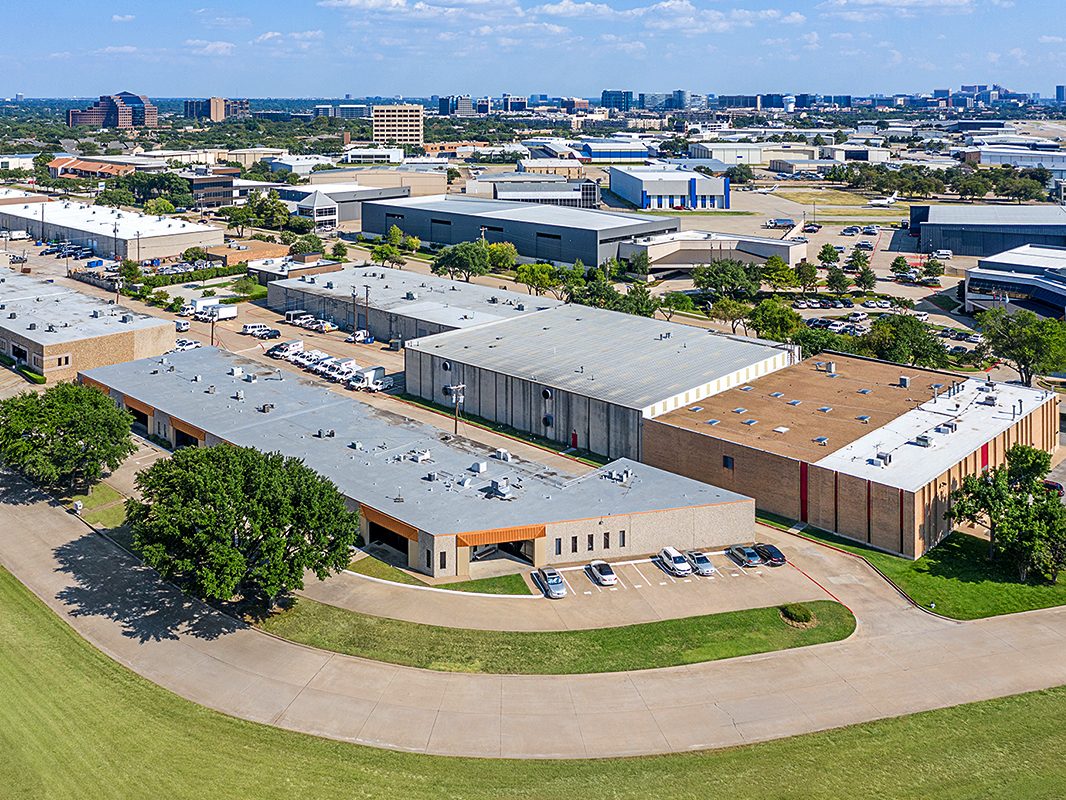How Will AI Impact Data Center REIT Investment?
CenterSquare's Patrick Wilson on how REITs are poised to leverage the coming wave of AI-related demand for data centers.

The utilization of AI technology is an enhancement to data center leasing demand, according to Patrick Wilson. Image courtesy of CenterSquare
The rise of AI is providing new opportunities for data center operators and investors alike. As the technology continues to grow and its applications widen, the infrastructure to support it also needs to advance. Data centers are the backbone on which AI will evolve and be deployed.
Having grown massively in the past two decades, data center REITs are ready to take advantage of the AI revolution. According to CenterSquare—one of the earliest investors in the sector—two data center REITs account for 8.6 percent of the entire REIT space, exceeding both retail and office.
With conversations about how AI can streamline and improve efficiency only intensifying, data center investment seems to be at an inflection point. Commercial Property Executive talked to Patrick Wilson, portfolio manager at CenterSquare Investment Management—one of the longest-tenured REIT managers in the market—about what’s next for these specialized platforms.
Tell us a bit about CenterSquare’s history of investing in data centers. How and why did you choose to focus on this sector?
Wilson: CenterSquare began investing in data centers nearly 20 years ago. Over the last two decades, the data center sector has become more sizable and relevant within the broader listed real estate space. Our firm was an early believer in the union between technology and real estate, along with the vital role that data centers continue to play by forming the backbone of all the digital media and services we consume today.
Digital Realty was the first data center REIT to make its way into our index in 2004 and CenterSquare was an early investor in the company. Over the following six years, two more data center entities had completed their initial public offerings and we were highly engaged in underwriting these newly minted REITs. In the more recent past, we have seen a large amount of mergers and acquisitions within the listed data center REIT sector via take-private and public-to-public transactions. This has served to heavily consolidate the space into two global leading platforms that are set to garner outsized market share going forward.
Our firm views the robust growth driven by secular demand for data and digital services as very attractive. The outsized growth of data consumption across the globe seems inevitable as video resolutions continue to increase, new digital services are rolled out and a more tech-savvy consumer starts to form a greater portion of overall data demand. Today, it is estimated that approximately 30 percent of enterprises in the U.S. have outsourced their data center infrastructure to a third-party provider. This is up from roughly 20 percent a decade ago. Moving servers off-premises to a private or public cloud environment will continue to occur and this transition will accrue to data center providers.
Additionally, much has been discussed and estimated about the impacts of AI over the coming years. While it is still the very early days for the proliferation of this technology, it is clear to CenterSquare that the incumbent data center REITs stand to play a big role in the development of AI. Recent AI requirements have been extremely large—so large that it is expected that only the deepest pockets of capital and well-established global platforms will be able to address these development projects. As a result, we believe the listed REIT platforms stand to gain market share going forward.
READ ALSO: Data Centers Proliferate Despite Global Roadblocks
We will surely see more and more business influenced directly by the growth of AI in the coming years. Has this influence manifested itself already, if at all, for companies such as CenterSquare?
Wilson: CenterSquare has made investments to bolster its digital infrastructure and research efforts over the past three years. We have integrated various SaaS platforms within our departments which we expect to provide us access to AI-derived inferencing in the future.
On the investment research front, we have begun to incorporate new data sources to determine the utilization and foot traffic of real estate properties within our portfolio. This technology has only recently become available and we expect the datasets we receive to begin to incorporate elements of advanced computing to better interpret the information we are monitoring.
How does CenterSquare approach the issues of scalability and adaptability of its portfolio to meet the evolving demands of AI deployments?
Wilson: Following a profound amount of take-private mergers and acquisitions that occurred during the COVID-19 pandemic, the data center REIT market has been thinned dramatically. As a result, we have been left with two large global platforms with slightly different focuses. CenterSquare is in constant dialogue with these REITs to monitor what asset dispositions and retrofitting they are looking at to accommodate the newest AI deployments we are seeing in the marketplace.
Has the current economic environment affected the data center REIT sector in any way? Are you foreseeing any changes in the second half of the year?
Wilson: Year-to-date, data center REITs have had great success being able to source capital. Debt and equity investors alike, particularly foreign investors in lower interest rate environments, have made large investments in the space. While the debt markets have gotten more expensive and essentially frozen for some property types, the data center REITs haven’t had issues generating interest in their debt offerings. While needed debt funding for the data center REITs has already been issued for 2023, we wouldn’t expect investor appetite for digital infrastructure-backed debt to wane, particularly as AI-related demand begins to underpin future cash flows.
As AI deployments generate significant amounts of data, and have specific latency requirements, how are geographic considerations evaluated for new locations? Are there any emerging trends or preferences in terms of proximity to AI hubs, connectivity, or energy infrastructure that impact real estate decision-making?
Wilson: The deployment of AI is expected to unfold in two stages: training and inferencing.
The initial training phase of AI development is just getting underway and is how an interface like ChatGPT was rolled out to the masses this year. Training a large language model (LLM) requires incredible amounts of power and compute infrastructure. As such, the training is beginning to take place in secondary or tertiary markets where power is cheap and available. It also helps to be in a business and tax friendly state.
A good example of this would be Amazon’s announcement this year to build a data center campus on 400 acres of land purchased by the company. Expectation is that AWS could spend approximately $10 billion on the project once it is fully built out. Not so coincidentally, this campus will be in the same central Ohio county where Intel broke ground last August to build its new $20 billion semiconductor manufacturing facility. With cheap and abundant power, a business-friendly political environment, and access to the latest and greatest chips Intel will produce down the street, this is a prime example of where the large cap multinational cloud providers will look to train their new AI models.
The second phase of AI deployment, inferencing, will be largely focused on connectivity and latency. This differs from the initial training phase in which latency, and frankly even data center resiliency, is of little to no concern. The deployments where actual inferencing is taking place will be much smaller in size and may even resemble larger versions of what today is referred to as a cloud on-ramp.
Once the LLMs are trained they can then be utilized—and monetized—by allowing enterprises across a myriad of industries to make use of the technology for their specific business. As a result, it will be important to collocate and interconnect with multiple AI models in more centralized places to reduce the total all-in cost an enterprise will incur. In more latency sensitive applications, it will be important to place servers in closer proximity to the LLMs. In general, the inferencing phase is expected to enhance the value and tenant retention of the current network-dense data centers located in more traditional markets.
Meanwhile, we’re seeing an acceleration in innovations at the edge level and distributed data processing. How do these trends influence the strategic positioning and investment decisions of REITs in terms of data center locations and network infrastructure?
Wilson: While we have seen accelerated development of the edge markets and a greater focus on creating a more decentralized model, the data center REITs have chosen to participate in some of these projects by placing virtual cross connects within some of these facilities as opposed to building the data centers themselves. The key data center markets are expected to remain on healthy fundamental footing as power availability and permitting continues to become more and more challenging. This leaves the secondary edge markets today as a bit of an escape valve for the very robust demand for digital infrastructure that we continue to see.
READ ALSO: AI Takes Center Stage in CRE
REITs currently control the majority of hyperscale cloud on-ramps for providers. How will this help with further strategic positioning and investment decisions in the coming years?
Wilson: The presence of multiple cloud on-ramps will be of supreme importance for AI inferencing. Data center REIT portfolios are seen as cloud-neutral environments, as opposed to going into an Amazon- or Google-built facility, which will enhance the attractiveness of collocating within their facilities. This will allow for a single tenant to interconnect with multiple AI models in one place, reducing costs paid to carriers and latency. As AI inferencing begins to take place at greater scale, we expect our investment focus to also transition more towards which data center platforms are winning the most market share from customers demanding interconnections with multiple AI models simultaneously. This should become more prevalent in years to come.
What other expectations do you have for the future of the data center sector in the context of AI advancements? How will the interplay between AI technologies and real estate requirements evolve over the next few years?
Wilson: In short, we are in the very early stages of AI advancement and even the most knowledgeable industry experts are unsure about how quickly AI will be implemented across global enterprises. This is due to various uncertainties regarding expected regulation that has yet to be put in place, hardware production and advancement in chip specifications, availability of power and land for data center development, and the appetite and volume of capital looking to be deployed into digital infrastructure space.
All these factors make forecasting quite difficult today. However, what is clear at present is that the utilization of AI technology is an enhancement to data center leasing demand—it is clear to CenterSquare and other industry experts that the rollout of AI technology to the masses will be beneficial to the data center REITs and enhance the value of existing network-dense interconnected facilities in the future.








You must be logged in to post a comment.